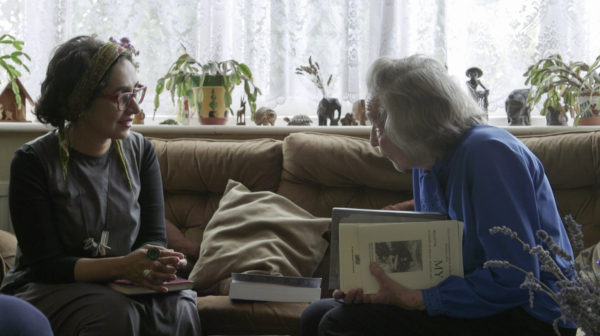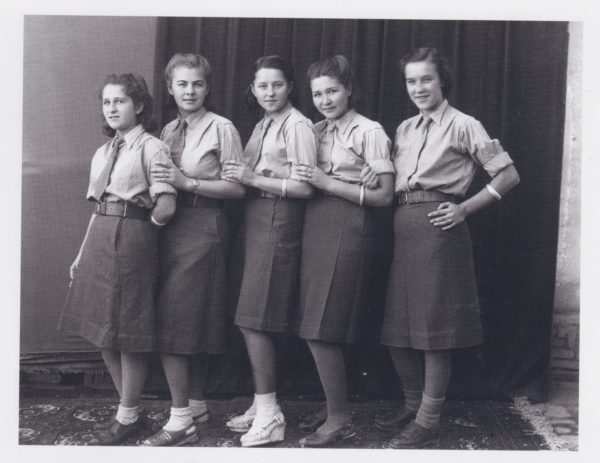Probability and odds. It’s a matter of mathematics. Among about one hundred photographic negative glass plates, what are the chances of spotting just one of them and then finding the subject posed in that very photo, miles away from where the negatives were found, years later?
I was about eighteen (or one or two years older, I can’t recall precisely) and while studying in Tehran University, I was working occasionally as an underpaid translator, screenwriter and archivist sometimes. A friend of mine, older than me, who met me in the very first moments of my growing passion for cinema, employed me categorizing the negative glass plates she received from an old photographer’s heirs in Isfahan. These negatives were of Polish immigrants in Isfahan back during World War II.
I remember holding a black screen behind or staring at the back side of the plate, I could see the positive version of each image. But for most of the time, to my eye, these were faces documented in black and white, negative to my visual perception: therefore the eyes were white and the faces black. The phantasm-like portraits of people in the past, staring at me through a piece of glass. They were mostly children, rarely any adult woman was included and almost never a man could be spotted in the survived images of Polish residents of Isfahan. I reviewed the images over and over, almost memorizing each. But I clearly remember one that was of four young girls, posing in line, glancing with a polite smile, the one you might wear before a photo-camera.
So here are the odds: years later in London, accidentally passing before POSK, I thought of those haunting faces in black and white negatives and started sending messages to lots of Polish cultural organisations in London. I was just curious to find out what they know about the children of Isfahan and if anyone of them, after visiting Iran, has by any chance ended up here in UK. Miraculously there came a response from Kresy Family; Mirka, as joyful in person as she sounded on the phone, eased the whole process. She is the link, the torch, still walking us through the whole dark path of Polish children in exile.
And that was how one of the girls in that very photo, the second one in the line, the same smiling haunting face documented in negative was oddly retrieved miles away from where her primary image was conserved.
Irena, as beautiful as she was captured in the photos of her residency in Isfahan, opens the door of her house to us. Glorious, generous beauty of a person who represents life and hope. Though she narrates her story in Polish, everyone in the room is moved, just by listening to her voice: a succession of laughter and cry; a voice that is both hopeful and desperate at the same time. She speaks of Isfahan, a city I’ve been to; I’ve seen Isfahan more than once. Still it seems that the image I have in mind from this city doesn’t match the one Irena has seen and lived. Isfahan, this utopia, or the remaining image of it in Irena’s impeccable memory seems to be off the map, non-existent.
Now we are in the middle of a story that though it lives in the past, flows delicately in the present. Irena’s story is that of a poet, a story of love and loss, being all cheerful, inspirational and horridly unbelievable. She is a living part of history, an untold part of history who encourages us to scavenge more and find more testimonies; collect and complete the blank pages of Polish children’s story in their long term exile. Iran was the path. Everyone after Siberia, even though they were headed to Africa, India, Mexico or New Zealand, passed through Iran and arrived firstly to Pahlavi, now Anzali port. Everyone saw that approaching coast of unknown land.
So our successive pace my dear reader is to document your version of the story; your view of arrival to Iran and if by any chance you’re one of those who remained in Isfahan, that would be a crucially significant piece of this puzzle. We’re a small group of three, crawling extremely slowly from one story to the other but still there is something urgent about this documentation. The living testimonies of what Polish people has gone through should be conserved and transmitted. These stories should pass on out of merely Polish or Persian community. So you, whoever reads this piece, can contact and accompany us in taking our first steps towards the truthful version of a history untold and remained silent for a very long time. It’s a matter of mathematics, probability and odds; more stories documented, this visual narrative can represent a wider dimension of the disaster and therefore a more precise and faithful version of the occurrence; so if you feel like reviewing your family or your own story out loud, just step up.
Maryam Raz
Maryam is an Iranian filmmaker living and working in London
If you are one of the Children from Isfahan and would be willing to be interviewed or have materials from that time you would be prepared to share, please contact us: Maryam Raz (maryam.raz@gmail.com) or Mirka Wojnar (mirka_w@yahoo.co.uk)













![Czy to możliwe? Laxton Hall po raz szesnasty! [ZDJĘCIA]](https://www.tydzien.co.uk/wp-content/themes/LondonLive/thumb.php?src=/media/2024/06/Głowne-zdjęcie-do-artykułu-nr-3-600x400.jpg&w=95&h=74&zc=1&q=100)



